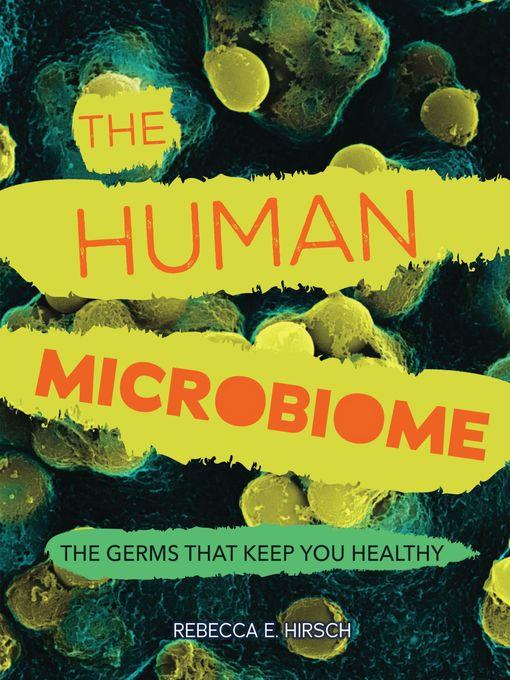
The Human Microbiome
The Germs That Keep You Healthy
فرمت کتاب
ebook
تاریخ انتشار
2016
Lexile Score
1150
Reading Level
7-9
ATOS
8.7
Interest Level
4-8(MG)
نویسنده
Rebecca E. Hirschشابک
9781512411409
کتاب های مرتبط
- اطلاعات
- نقد و بررسی
- دیدگاه کاربران
نقد و بررسی

July 1, 2016
Gr 7 Up-It's hard to think of oneself as a mere physical plant for trillions and trillions of microbes-microscopic creatures in a custom-individualized mixture (like a fingerprint) existing on us and in us, acting beneficially, neutrally, pathogenically, part and parcel of our personal selves. Hirsch's readable, lucid text introduces us to these colonizers/hitchhikers/attackers, where they live on/in us, what they do, how they benefit (mostly) or harm us, and-equally important-how we affect them and what it all means to our health in general. She discusses the "golden age" of antibiotics and the dangerous land mines implanted by their overuse-the "superbugs" that have erected defenses against the best medicines we have to offer and the effects of antibiotic overuse on our food supply. And the author writes of how probiotics assist our bodies in providing a safe haven for our "bugs of choice." Information boxes abound on such interestingly diverse topics as "Solving Murders with Microbes," "The Strange Case of the Disappearing Helicobacter Pylori," and the "Penicillin Girls." Advice boxes give instructions on "Tending Your Microbial Garden," handwashing, and taking your DNA "fingerprint." VERDICT Unexpectedly informative and up-to-the-minute in research, this is a nifty look through a clear window at our unsuspected personal passengers. Consider this in-depth resource for reports and students who are not easily made squeamish.-Patricia Manning, formerly at Eastchester Public Library, NY
Copyright 2016 School Library Journal, LLC Used with permission.

May 15, 2016
Thousands of different types of microbes inhabit, in unimagined profusion, many parts of the human body. It's an ecosystem worth exploring.Veteran science writer Hirsch takes on the job, providing detailed and accurate information on the history of microbial science and the development of antibiotics, the variety of microbes, the effects of antibiotic overuse, and the evolving science of the role of the human microbiome in health and disease. Although the topic is complex, this overview is presented clearly and without oversimplification. The design, however, gets in the book's way. As in so many nonfiction works for young audiences, a plethora of text boxes interrupts the flow of the narrative, often to annoying effect. Although DNA is first mentioned on Page 17, it is not described and fully explained (in a text box) for another 40. Only in the glossary and index is it named as deoxyribonucleic acid instead of "DNA." There are many outstanding stock color photographs of bacteria but no useful explanation that these were taken though a microscope of a certain power. Although many complex words are introduced (and helpfully defined in both the text and a lengthy glossary), unfortunately, no guide to pronunciation is included. Detailed backmatter rounds out the book.This important topic is worthy of attention, and in spite of some design flaws, this will serve middle and high school readers well. (Nonfiction. 11-18)
COPYRIGHT(2016) Kirkus Reviews, ALL RIGHTS RESERVED.

May 15, 2016
Grades 8-12 This thoroughly researched introduction to human microbes is not for the squeamish. On your face right now are millions of creatures invisible to the naked eye, Hirsch writes. They squirm across your cheeks, flourish on your forehead, and nestle inside your nostrils. Feeling itchy yet? It's nothing to worry about, Hirsch insists. Most of these microbes are essential to human health. With great detail, she proceeds to go into the way the human body functions as a habitat for microbes and the symbiotic relationship we have with them, as well as the history of scientific discovery. From the seventeenth-century findings of Robert Hooke and Antoni van Leeuwenhoek, the first to observe microbes, to the development of antibiotics, this leaves no stone unturned. Close-up photos of microbes and bacteria are shown alongside scientists at work. The level of detail makes this better suited for science students than casual readersbasic biology vocabulary knowledge would go a long way here. Still, this comprehensive volume makes for a valuable classroom resource.(Reprinted with permission of Booklist, copyright 2016, American Library Association.)

























دیدگاه کاربران